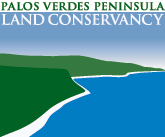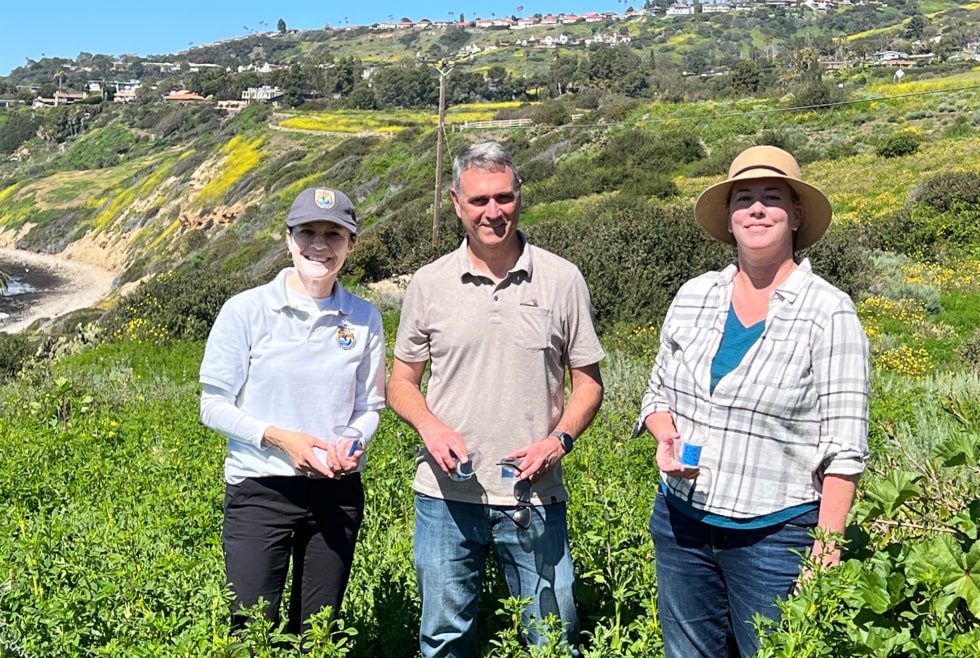The Go Wild for the Peninsula initiative launched in summer 2022 achieved the acquisition of the 96-acre Wildlife Corridor, bringing the lands preserved under the Natural Communities Conservation Plan and the Palos Verdes Nature Preserve to nearly 1500 acres. The Preserve is owned by the City of Rancho Palos Verdes and the Conservancy, as Habitat Manager, oversees restoration planning and implementation, vegetation and wildlife monitoring and other duties to ensure the protection and restoration of these lands. The past year has seen a tremendous amount of activity by the full time Steward-ship crew and hundreds of volunteers.
After careful planting and maintenance over the past few years, Conservancy stewardship staff and interns conducted surveys in the Alta Vicente Reserve and Portuguese Bend Reserve where the Palos Verdes blue butterfly and cactus scrub habitat has surpassed the standards for restored habitat set by the California Department of Fish & Wildlife.
The latest habitat restoration project at Abalone Cove Reserve will restore 20.3 acres of mixed coastal sage scrub and mixed Southern Coastal Bluff Scrub/Southern Cactus Scrub – California’s most threatened habitat type. The fourth and final phase of restoration in Abalone Cove Reserve that began in 2022 has already progressed significantly thanks to additional drip irrigation installation and consistent weed management by Conservancy Stewardship Technicians and volunteers.
The Preserve is an ideal setting for outdoor research, providing university scientists and students with access to a variety of habitat types and wildlife. In winter 2022, a high school student began a long-term phenology study on Palos Verdes blue butterfly host plants (rattlepod and deerweed) throughoutseveral reserves. The student is providing helpful information that will help inform adaptive restoration strategies in the future while also gaining field experience for a future career in conservation. A CSULB environmental science student also conducted hands-on restoration in Lunada Canyon and drafted research proposals for projects that will help inform restoration efforts at the site, including planting strategy and methods. In addition, interns working directly with the Conservancy’s Stewardship team facilitated two ongoing research projects: monitoring remote wildlife cameras and conducting a Cactus Wren habitat suitability study.
The Conservancy has two community science programs that volunteers can join: Wildlife Tracking and Cactus Wren Monitoring. The Wildlife Tracking program is a long-term, ongoing project where volunteers survey the Pre-serve for the presence of canids and other mammals and collect data to help the Conservancy understand how animals use and move through the Pre-serve. The Cactus Wren Monitoring program helps to answer the question: Where are cactus wrens found in the preserves year-to-year? Teams of volunteers regularly hike the trails, documenting when cactus wren are heard and/or seen from March through August, during breeding season. Surveys showed that cactus wren nests were present in Alta Vicente, Three Sisters, Filiorum, and Ocean Trails Reserves. Juveniles were observed at both Ocean Trails, Three Sisters, and Alta Vicente Reserves, which is a good sign of nesting success. The most exciting and promising results is cactus wrens have also been observed in new locations including Abalone Cove, Portuguese Bend, and White Point. Wildlife Tracking and Cactus Wren Program monitors learned how to identify the cactus wren in their habitat and how to record field observations on the mobile app, urvey123. This app streamlines the data collection, analysis and organi-zation process.
In 2022, a wildlife acoustic recording device was generously donated to the Conservancy by a volunteer. The recording device will advance the Conservancy’s cactus wren and California gnatcatcher research by collect-ing data in locations that are too steep or vegetated to access and regular-ly monitor. The Conservancy’s Community Science activities also included the Audubon Annual Christmas Bird Count in partnership with the South Bay Audubon Society. Volunteers new to birding learned from experienced birders during their surveys.
The Conservancy offers many opportunities to become a Community Sci-entist. You can find out about upcoming trainings at: pvplc.org/volunteer.

